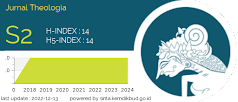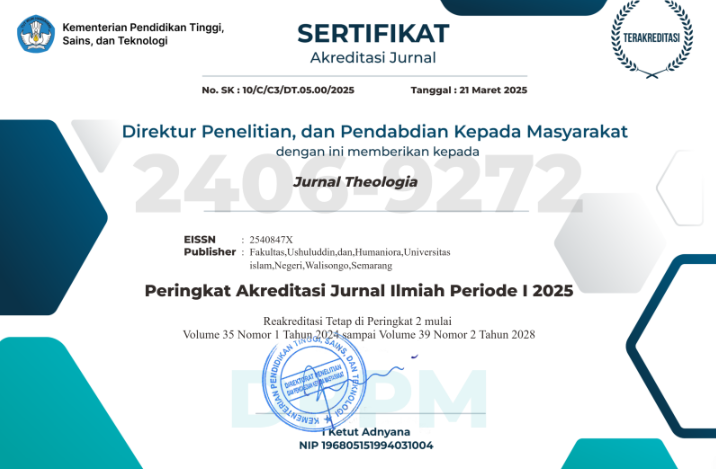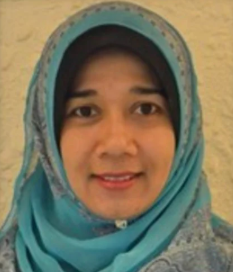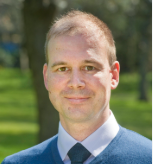The Suluk of The Salik in the Concept of Seven Stages (Martabat Tujuh) of Abdel Samad al-Palimbani
DOI:
https://doi.org/10.21580/teo.2022.33.1.12575Keywords:
Abdul al-Samad al-Palimbani, Philosophical Sufism, Seven Stages, SulukAbstract
This article aims to reveal how the idea of Abdel Samad al-Palimbani on Seven Stages (Martabat Tujuh) is considered controversial by some Muslims. The reason is that this idea is part of the concept of embodiment in the frame of philosophical Sufism. The seven stages essentially are to prove humans as the most perfect creation compared to others. This paper uses the library research method based on primary and secondary sources. This paper attempts to reveal al-Palimbani's ideas related to the seven stages concept. These seven stages discussed Salik's position as caliph on the earth. A Salik is always eager to find the best way to arrive at the paran. The idea of The Seven Stages is to know how close a man is to his Creator. For Salik's is to know their position as being who manifests God’s Tajalli. Unfortunately, such an idea is not fully implemented, even among Islamic thinkers themselves it has been considered heretical and forbidden. This paper showed that the seven stages are the unique condition that must be understood by all Muslims who are concerned with Islamic esoteric studies to know the autentic reality.Downloads
References
‘Abd al-Ṣamad Al-Falimbānī. Siyar Al-Sālikīn Fi Ṭarīqah Al-Sādāt Al-Ṣufiyah. 3rd ed. Indonesia: Dar Ihya’ Al-Kutub Al-‘Arabiyyah, n.d.
Abdul Aziz Dahlan. Penilaian Teologis Atas Paham Wahdat Al-Wujud (Kesatuan Wujud) Tuhan, Alam, Manusia Dalam Tasawuf Syamsuddin Sumatrani. Padang: IAIN-IB Press, 1999.
Abdullah, Mal An. Syaikh Abdus-Samad Al-Palimbani : Biografi Dan Warisan Keilmuan. Yogyakarta: Pustaka Pesantren, 2018.
Ahmad Amir Aziz. “REKONSTRUKSI METODOLOGI ILMU TASAWUF DI PTAI.” Intelegensia 07, no. 1 (2019): 1–11.
Ahmad Mustofa. Akhlak Tasawuf. Bandung: Cv Pustaka Setia, 2010.
Ahmad Taufik dkk. “KONSEP TEOLOGIS AHLUSUNAH WALJAMAAH DALAM TUHFAH AR-RAAGHIBIIN KARYA ABDUSSAMAD AL-PALIMBANI (SEBUAH KAJIAN FILOLOGIS).” HALUAN SASTRA BUDAYA 4, no. 2 (2020): 152–62.
Arafah Pramasto. “Idealisme Sosial Kemasyarakatan Dalam Kitab Hidayatus Shalikin Karangan Syaikh Abdus Shamad Al-Palimbani .” Analisis: Jurnal Studi Keislaman 20, no. 1 (2020): 1–18. https://doi.org/10.24042/ajsk.v20i1.
Azyumardi Azra. The Origins of Islamic Reformism in Southeast Asia: Networks of Malay and Middle Eastern ‘Ulama’ in the Seventeenth and Eighteenth Centuries. Honolulu: Allen & Unwin, 2004.
Bistara, Raha. “WAHDAH AL-WUJUD IBN ARABI DALAM IMAJINASI KREATIF HENRY CORBIN.” Academic Journal of Islamic Principles and Phylosophy 1, no. 1 (April 4, 2020): 1. https://doi.org/10.22515/ajipp.v1i1.2344.
Carl W. Ernst. Ajaran Dan Amaliah Tasawuf. Edited by Arif Anwar. Yogyakarta: Pustaka Sufi, 2003.
Choiriyah. “Amar Ma’ruf Nahi Munkar Dalam Persfektif Syekh Abdussomad Al-Palimbani Dalam Kitabnya Sairussalikin Ila Ibadah Robbal ‘Alamin: Relevansinya Dengan Aktifitas Dakwah.” WARDAH 3, no. 2 (2019): 1–23.
Farisi, Salman Al. “PENGEMBARAAN ILMIAH DAN PERAN SYEIKH AHMAD KHATIB AL-SYAMBASI DALAM PENYEBARAN ISLAM DI NUSANTARA MELALUI THARIQAT QADIRIYYAH WA NAQSABDNIYYAH.” Living Islam: Journal of Islamic Discourses 4, no. 2 (2021): 165–78.
Firdaus, Firdaus. “Meretas Jejak Sufisme Di Nusantara.” Al-Adyan: Jurnal Studi Lintas Agama 13, no. 2 (2018): 303–35. https://doi.org/10.24042/ajsla.v13i2.3854.
Hadi, Abdul. “Peran Tokoh Tasawuf Dan Tarekat Nusantara Dalam Dakwah Moderat.” Ad-Da’wah Jurnal Dakwah Dan Komunikasi 22, no. 01 (2022): 31–49.
Harun Nasution. Falsafat Dan Mistisisme Dalam Islam. 12th ed. Jakarta: Bulan Bintang, 2014.
———. Islam Ditinjau Dari Berbagai Aspeknya. Jakarta: UI-Press, 1979.
Herlina, Herlina. “Information Search Process: Studi Proses Pencarian Ilmu Pada Naskah Al-Palembani Abad Ke 18M.” JIPI (Jurnal Ilmu Perpustakaan Dan Informasi) 3, no. 1 (2018): 1–17. http://jurnal.uinsu.ac.id/index.php/jipi/article/view/1483.
Kautsar Azhari Noer. Ibnu Arabi: Wahdah Al-Wujud Dalam Perdebatan. Jakarta: Paramadina, 1995.
Khudin, Sholeh. “Corak Pemikiran Kalam Ulama SUMSEL Abad Ke-19 Dan Awal Abad Ke-20.” Tamaddun: Jurnal Kebudayaan Dan Sastra Islam 20, no. 2 (2020): 142–63. https://doi.org/10.19109/tamaddun.v20i2.6760.
Martin Van Bruinessen. Tarekat Naqsyabandiyah Di Indonesia: Survei Historis, Merupakan Periode Yang Normatif Bagi Pembentukan Pikiran Dan Praktik Tasawuf Dan Tarekat. Guru-Guru Sufi Terlibat Aktif Tidak Hanya Dalam Mengintelektualisasi Berbagai Disiplin Ilmu-Ilmu Keislaman Teta. Bandung: Mizan, 1994.
Muzakir, Ali. “Wacana Martabat Tujuh Di Jambi.” Jurnal Al-Aqidah 11, no. 2 (2019): 208–18. https://doi.org/10.15548/ja.v11i2.1423.
Oman Faturrahman. Menyoal Wahdatul Wujud: Kasus Abdurrahman Singkel Di Aceh Abad 17. Bandung: Mizan, 1999.
Pramasto, Arafah. “Analisis Etika Ilmu Pengetahuan Dalam Kitab Hidayatus Salikin Karangan Al-Palimbani Abad Ke-18.” Jurnal Dimensi 9, no. 1 (2020): 125–34.
———. “Kritik Terhadap Pemikiran Kontroversial Bercorak Panteistik Di Tengah Umat Islam Dalam Karya Syaikh Abdus Shamad Al-Palimbani Abad Ke-18.” SINDANG: Jurnal Pendidikan Sejarah Dan Kajian Sejarah 2, no. 1 (2020): 8–18. https://doi.org/10.31540/sindang.v2i1.823.
Rahman, Fadli, and Ahmad Dakhoir. “The Concept of ‘Martabat Tujuh’ Al-Burhanpuri (Study of the Creation of the Universe in the Perspective of Philosophical Sufism).” International Journal of Multicultural and Multireligious Understanding 8, no. 7 (2021): 87. https://doi.org/10.18415/ijmmu.v8i7.2681.
Rehna Ginting, Lusinta, and Mely Nadia. “PEMBENTUKAN DAN PERKEMBANGAN TASAWUF FALSAFI.Docx.” Jurnal Bilqolam Pendidikan Islam 2, no. 1 (2021): 50–64. https://doi.org/10.51672/jbpi.v2i1.48.
Sayed Muhammad Naquib al-Attas. Mysticism of Hamzah Fansuri. Kuala Lumpur: University of Malaya Press, 1970.




















